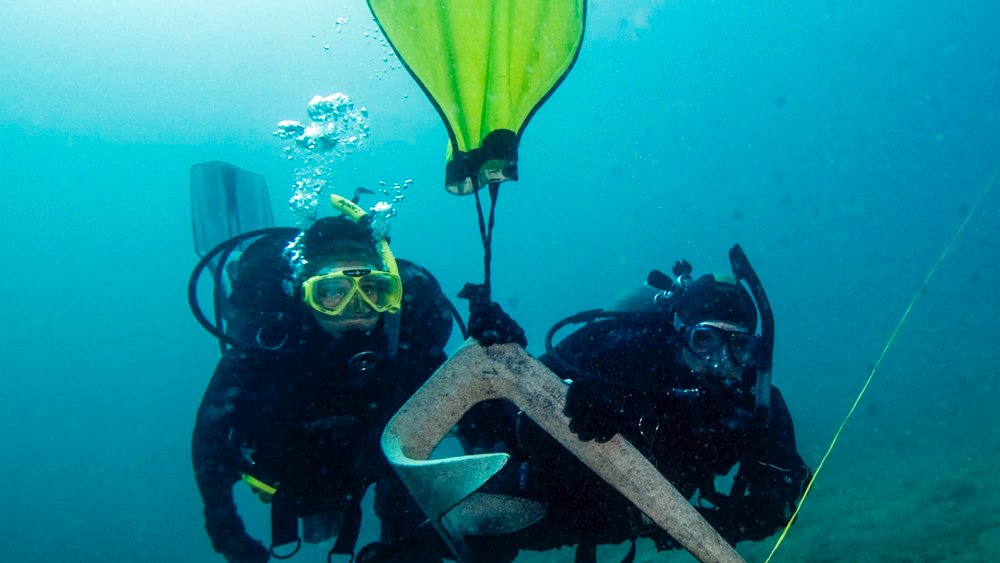
How to Get Certified for Deep Diving in the Philippines: 5 Steps
Do you want to up your game and become a deep diver in the Philippines? Read on and learn how you can earn your deep diving certification in one of the world’s best scuba diving destinations.
Before we dig deeper into getting certified, let us first identify what it means to be a certified deep diver.
What it means to be a certified deep diver
Deep diving refers to any dive that goes beyond the typical recreational diving limits of 18-20 meters (60-66 feet). As a deep diver, you will be trained to handle the unique conditions found at depths ranging from 30 meters (100 feet) to as deep as 40 meters (130 feet) or more. Being a deep diver means more than just exploring the depths of the ocean – it signifies a higher level of diving proficiency and the ability to navigate the challenges of deeper waters safely.
To be a deep diver, you must undergo advanced training to gain the necessary skills, knowledge, and experience. After your deep-diving specialized course, you must have learned and experienced the following:
- Awareness of the risks of deep diving
- In-depth dive planning
- Increased equipment familiarity
- Exploration of new dive sites
Why you should get certified for deep diving in the Philippines
Getting certified for deep diving will allow you to safely dive and enjoy deep diving destinations in the Philippines.
Diving safety
Certification is essential for ensuring safety when deep diving. It will provide you with the skills needed to manage risks like decompression sickness and nitrogen narcosis. With proper training, you will learn how to control your buoyancy, handle equipment, and respond to emergencies underwater. This knowledge will build your confidence, allowing you to enjoy your dives while staying safe.
The Philippines as a diving destination
The Philippines is home to some of the world’s most stunning dive sites, including Tubbataha Reefs and the wrecks of Coron. These deeper, more challenging spots require specialized training to dive safely. Becoming certified will allow you to explore these breathtaking underwater landscapes, ensuring you can navigate deeper waters while respecting the marine environment.
Deep diving course requirements
Below are the typical requirements to enroll in a deep diver specialty course:
- Be at least 15 years old
- Be a certified Advanced Open Water Diver
- Be in good physical health and able to complete a medical questionnaire or obtain a doctor’s clearance if necessary
Deep diving Philippines: the certification process
If you are qualified to take the deep diving course, here’s a step-by-step process for becoming certified:
1. Choose your certification agency
The first step is to compare different certification agencies in the country, including PADI, SSI, and NAUI. Learn about their pros and cons and match them with your diving needs and goals.
2. Choose your diving school
Next, is to choose your diving school. Many dive resorts in the country offer certification courses. Ask about their deep diving course as well as their qualifications, requirements, applicable fees, and other relevant information.
3. Enroll and complete the necessary paperwork and medical requirements
Once you have chosen your diving school and have qualified for the deep diving course, it’s time to enroll and complete your requirements, including medical forms and a doctor’s clearance if needed.
4. Undergo knowledge development and confined water training
After enrolling, you may now begin your training. It starts with theory lessons, which you can do online or in the classroom. Topics cover dive physics, equipment, safety, and the marine environment. After the knowledge development, you will be introduced to confined water training, where you will practice basic skills in a pool or shallow water
5. Do open-water dives
Once ready, you will do a number of open-water deep dives (typically 4-5) to finish your course and complete your certification.
Deep diving Philippines: 7 sites to explore
After completing your deep diving course in the Philippines, you can begin exploring these stunning sites.
1. Tubbataha Reefs Natural Park (Sulu Sea)
Located in the Sulu Sea, this UNESCO World Heritage Site offers pristine coral reefs, vibrant marine life, and dramatic drop-offs, making it a famous destination for deep-diving enthusiasts
2. Anilao (Batangas)
A short drive from Manila, Anilao is famous for its diverse marine life, vibrant coral gardens, and deep dive sites with impressive underwater topography like walls and slopes.
3. Puerto Galera (Mindoro)
Known for its clear waters and rich biodiversity, Puerto Galera offers deep-diving opportunities with walls, wrecks, and vibrant marine ecosystems, making it a popular spot for divers of all levels
4. Malapascua Island (Cebu)
Located off the northern tip of Cebu, Malapascua is famous for deep dives with thresher shark sightings at Monad Shoal and its beautiful underwater landscapes.
5. Balicasag Island (Bohol)
This famous diving spot near Panglao, Balicasag Island, offers steep walls, vibrant coral gardens, and deep drop-offs teeming with marine life like turtles, manta rays, and large schools of fish.
6. Siquijor Island (Siquijor)
Known for its mystical allure, Siquijor offers deep dive sites with excellent visibility, steep walls, and a wide array of marine life, perfect for both advanced divers and underwater photographers.
7. Camiguin Island (Mindanao)
This volcanic island offers exciting deep dive sites with steep walls, caves, and rich marine biodiversity, making it a hidden gem for advanced divers seeking unique underwater experiences.
Are you ready to take on a new adventure in diving? Enroll now in a deep diving course and explore stunning sites you have never seen before. To learn more, check out Deep Diver Specialty Course.



